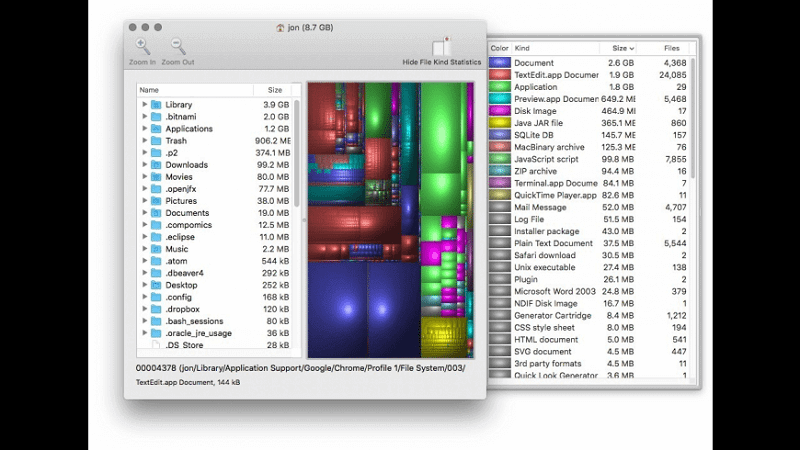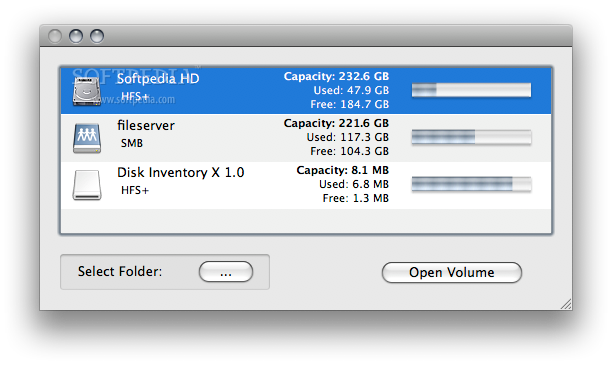

- DISK INVENTORY X FOR 10.13.6 HOW TO
- DISK INVENTORY X FOR 10.13.6 FOR MAC
- DISK INVENTORY X FOR 10.13.6 MAC OS X
- DISK INVENTORY X FOR 10.13.6 SOFTWARE
- DISK INVENTORY X FOR 10.13.6 PASSWORD
DISK INVENTORY X FOR 10.13.6 PASSWORD
Enter your keychain password and click the ‘Always Allow’ button to approve the access. The first time you run this command, the system will prompt to allow access to this password. When it finds an item that matches the name and account it will print the password.

This will search for an item in the keychain with a name of CLI Test and an account name of armin. > security find-generic-password -w -s 'CLI Test' -a 'armin' To retrieve a password from the keychain in a script, use the security command.
DISK INVENTORY X FOR 10.13.6 HOW TO
How to Retrieve the Password in the Script This will create an item in the Keychain with the name CLI Test and the account name armin and the horribly poor password password123.

> security add-generic-password -s 'CLI Test' -a 'armin' -w 'password123' You can also add the password from the command line with the security command. The “Keychain Item Name” is what we are going to use later to retrieve the password, so watch that you are typing everything correctly. Then enter the Keychain Item Name, Account Name and the password into the fields. Open the Keychain Access application and choose “New Password Item…” from the Menu. Since adding the password to your keychain is a one-time task, you can create the password manually. Update: I didn’t remember this, but Graham Pugh has written about this before. Note: Mischa used this in his ‘OnAirScanner’ script. This approach has the added benefit, that you do not have to remember to remove or anonymize any keys or passwords when you upload a script to GitHub or a similar service. However, it is quite useful for workflow scripts that you run interactively on your Mac. Since the user can go and inspect the key in the Keychain Access is also not well suited for critical passwords and keys.
DISK INVENTORY X FOR 10.13.6 SOFTWARE
The software will scan your disks and displays disk space usage on a sunburst map. DaisyDiskĪn alternative to Disk Inventory YX is DaisyDisk.
DISK INVENTORY X FOR 10.13.6 MAC OS X
If you prefer treemaps and want to check hard disk usage on your Mac, Disk Inventory X is your software! The disk usage utility works on Mac OS X 10.3 (and later versions) and combines a tree view with a graphical representation of disk space allocation.ĭownload Disk Inventory X for free. We have selected our two favorites for this presentation. There are several apps for disk space management for OS X. When it comes to visualizations, some prefer tree maps while others swear on sunburst charts – but they agree on one thing: A good visualization really helps when cleaning up disk space.
DISK INVENTORY X FOR 10.13.6 FOR MAC
The disk space manager TreeSize Professional is Windows-only, but if you are looking for TreeSize for Mac there are some other options you can use to clean up precious disk space. There is no other way: it’s time to find space hogs and get rid of them.īetter yet: Check disk space usage regularly and never let unwanted or redundand files pile up and clutter your hard disk. Your MacBook won’t store another file? New hardware can be quite expensive, the same goes for cloud storage. The Importance of Disk Space Management for OS X


 0 kommentar(er)
0 kommentar(er)
